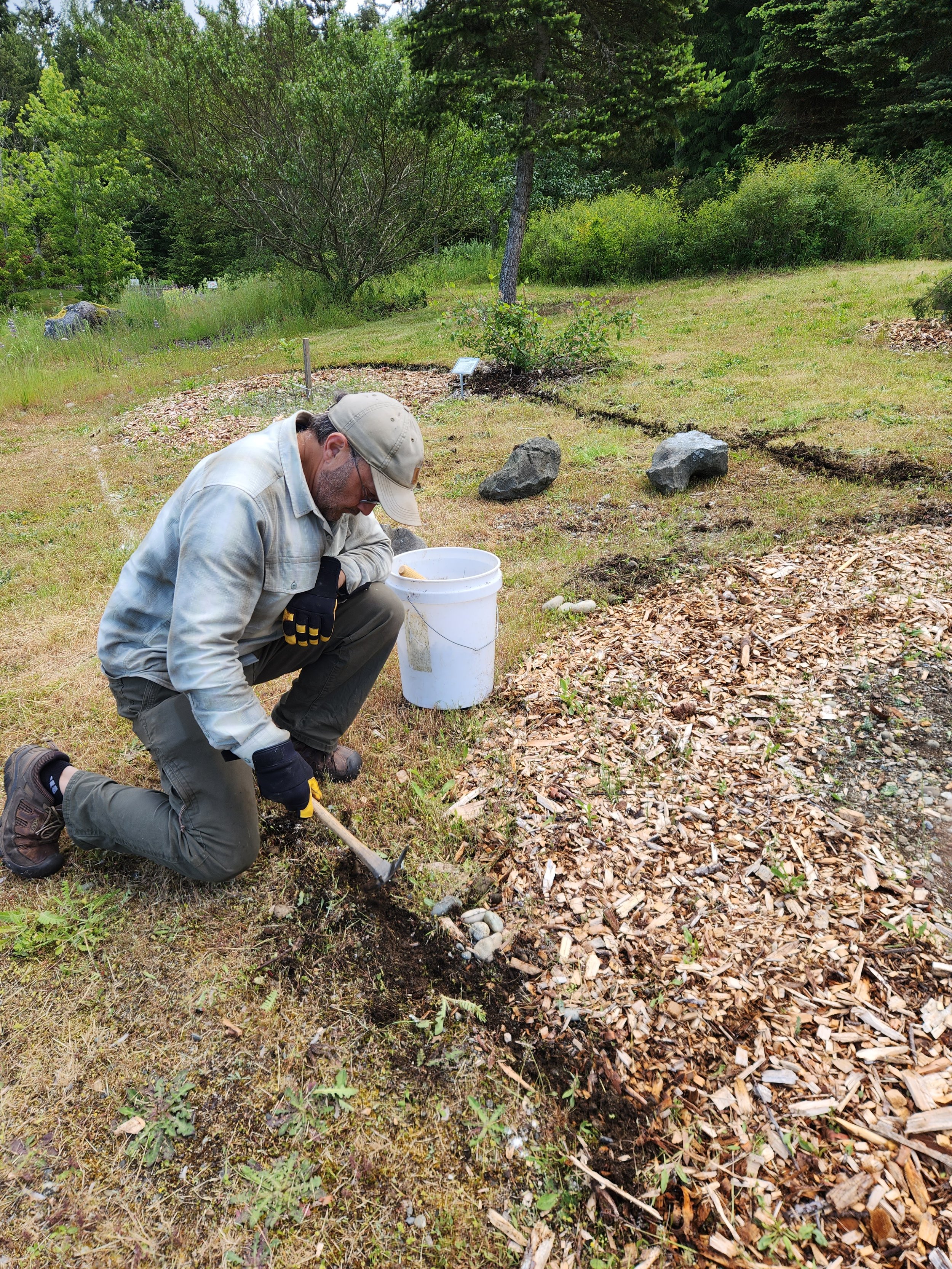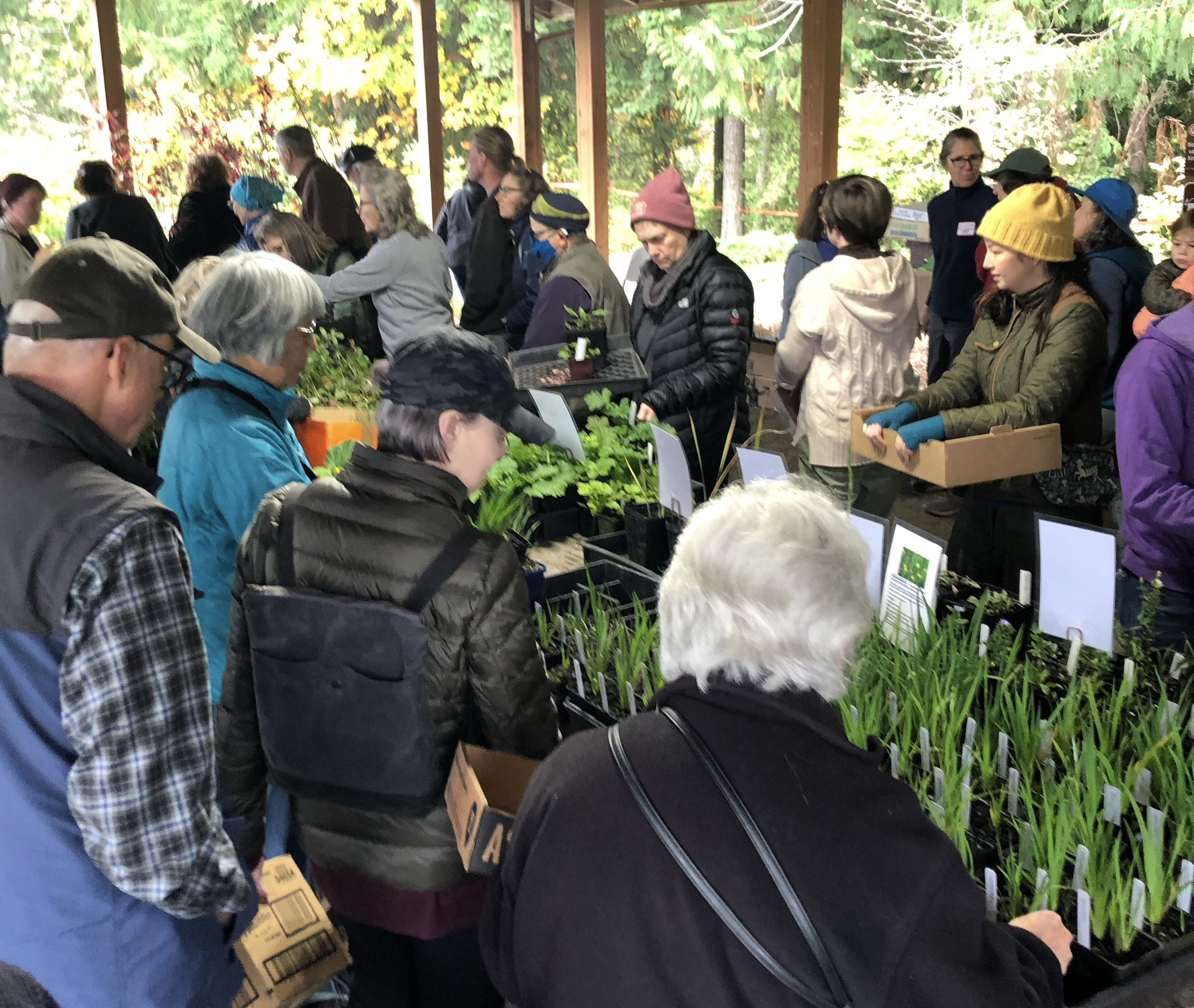
Who We Are
We're a group of native plant enthusiasts dedicated to nurturing Pacific NW native plants for the benefit of our greater community. Established in the late nineties, our garden has transformed a barren site into an educational venue through the support of local volunteers and partnerships with like-minded organizations.
GROUPS AND INDIVIDUALS WHO OVERSEE AND SUPPORT THIS ONE-ACRE GARDEN:
The Garden Designer - The Garden Stewards and Volunteers - The Nursery and Plant Sales - The Plant Care Team - The Steering Committee
WE VALUE, COLLABORATE, AND PARTNER WITH OTHER RELATED ORGANIZATIONS:
Washington Native Plant Society
Olympic Peninsula Chapter Washington Native Plant Society
North Olympic Salmon Coalition
Jefferson County Conservation District
Jefferson County Master Gardener Foundation
Kris Ethington - Educational Outreach - Washington Native Bee Society - wild4nativebees@gmail.com
IN THE GARDEN















OUR PLANT NURSERY
We grow a large variety of NW native plants at our nursery in Chimacum. We make them available to the public through our annual plant sales. Proceeds go toward the development and maintenance of the garden.











“I adore the native plant garden at H.J. Carroll; it’s helped me learn a lot of our local characters. :) Thank you for the work you do to maintain it as such a valuable community resource.”
—Marlowe Moser, Port Townsend WA

Our Story
In 1998, Wild Olympic Salmon (WOS) and Jefferson County Parks & Recreation partnered to create the Salmon Shelter at H.J. Carroll Park. Bill Irwin, a local contractor and WOS Board of Directors member, built and donated it. Linda Landkammer, a local landscaper, was then asked by WOS to design a garden on the surrounding acre. It was a barren site left over from a commercial gravel pit. She decided that using native plants would be beautiful and a way to “restore” the site and become an educational venue over time.
Sara Mall Johani, a founder of WOS, named the gardens after Chief Kul Kah Han, the last known Chief of the Chemakum tribe at the time. Living not far from the garden site in the 1850s, these people used these plants for food, clothing, and medicine in their daily lives. The garden was designed to represent ecosystems seen in the Pacific Northwest.
The garden has continued to take shape due to Linda’s creative vision and the diligence of many other local volunteers. John Licswinko, mosaic sculpture artist, created the wall depicting mountains, salmon and native plants. Audrey Miles Cherney created botanical drawings, Jefferson County Master Gardener Foundation and Washington Native Plant Society gave grants for projects, and several local groups, including the Port Townsend and Tri-Area Garden Clubs, provided support.
A stewardship program began in 2003 where individuals focus on one ecosystem, providing for the special needs of the plants in that area. In 2008, we enjoyed a huge growth spurt when Robin Nye signed on as Steward of the Forest area. She facilitated the removal of noxious weeds, added native woodland plants, and began managing the garden alongside Linda.
From 2007 on, we have held educational presentations on native plants and related subjects such as ethnobotany, beneficial mycorrhizae, and attracting birds. In 2012, we completed several infrastructure projects, such as additional paths, plant signage, and the kiosk. As of June 2013, the culmination of this cooperative community effort allowed us to hold our Grand Opening as a self-guided interpretive site for the community at large.
Over time, we have significantly increased our plant collection through study and thoughtful selection of new species, locating the plants to purchase, preparing the hardscape, and planting. This provides a rich educational experience for visitors.
As the garden developed, we heard the public demand for native plants. Our mission was successful. We rose to the occasion and began propagating plants for sale. Eventually, we came to share the nursery space with the North Olympic Salmon Coalition at Finnriver Farm, and our story continues to evolve.
“This is a wonderful spot to learn the names of native plants, and their typical environments. The informations is very helpful when deciding on plants for my own native garden.”
— Carol Edwards


















